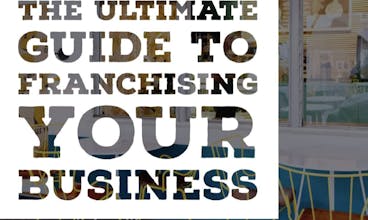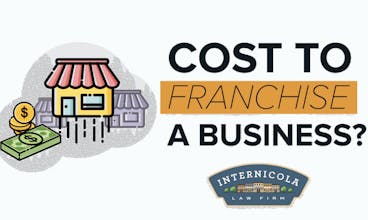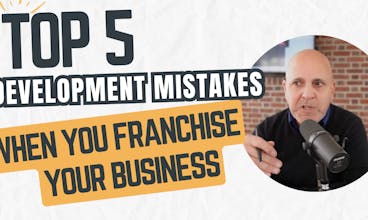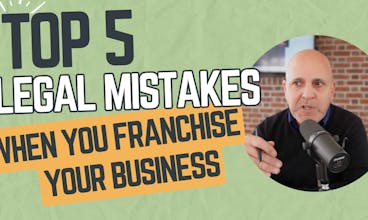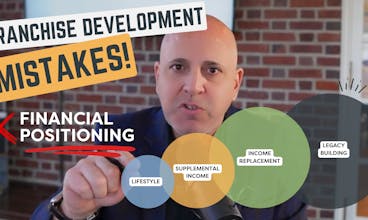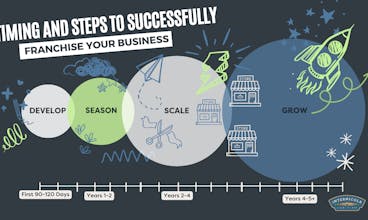Here's how to determine what success should look like for you as a new franchisor.
TAKEAWAYS:
Success looks different for every entrepreneur, so it’s important to define it on your terms before franchising your business.
Creating a five-year success plan can help clarify your goals and determine what winning should look like for you as an emerging franchisor.
By setting realistic goals and focusing on continuous improvement, you can lay a strong foundation for your brand’s success early on.
When you’re considering franchising your business, defining what “winning” looks like for your brand is critical before taking action – even if you’re already a successful business owner.
Unfortunately, because the concept of franchising can be exciting for ambitious entrepreneurs, new franchisors often get swept up in the process of developing their Franchise Disclosure Document (FDD), creating an operations manual, and even trying to market and sell franchises before they’ve laid a solid foundation for their franchise system. Those hasty business decisions, combined with a failure to define what success should look like, can lead to frustration, confusion, stagnant franchise sales, legal issues and worse.

So how can business owners avoid those common pitfalls and define success on their terms before franchising? In this article, we’ll explore the waypoints aspiring franchisors should consider establishing for a more successful – and sustainable – franchising journey.
1. Establish Context
As a business owner considering franchising, defining what success can, and should, look like for your brand is critical for achieving your goals as a future franchisor. To clarify what winning looks like for you, it’s important to establish context by assessing the business factors that will impact your brand’s ability to grow. Those factors include, but aren’t limited to, the following:
Your business. Does your business operate from a brick-and-mortar location or do you work remotely? Does your company have a strong track record of economic success?
Your industry. How is your brand positioned in its industry, and how does it compare to competitors? Are you an innovator, or is your market saturated with competitors?
Opportunity profile. What economic benefits or lifestyle advantages can your offering provide to future franchisees? How do your initial franchise fees compare to competitors? How strong are your Item 19 financial performance representations?
Available capital. How much capital do you have available to spend on developing your franchise system and to invest in marketing, sales, training and franchisee support?
Scalable infrastructure. Are your goods and services replicable, and do you have systems and processes that can be duplicated across locations?
Audience. How much influence and reach does your brand have?
Validation. If you already have some franchisees, can they validate your offering to prospective buyers?
By establishing context for your future success, including your business’s available resources, industry position, and opportunity profile, you can set more realistic expectations for growth as a franchisor – and develop a practical plan for long-term success.
2. Make a Plan
As a new franchisor, developing a rolling five-year success plan is critical for establishing a vision of success as you continue building your brand from the ground up. Although it might be tempting to use a boilerplate business plan to set goals when you’re just getting started, creating a custom business plan for franchising your business can ensure that your approach is tailored to the specific needs of your business and your vision of success as a franchisor.
Because the first 24 months of franchising can determine the trajectory of a franchise system and its ability to thrive, new franchisors often choose to focus on organic growth during their first two years in business, “seasoning” their new brand and over-supporting their first franchisees after developing and issuing their FDD and establishing a budget.
In franchising, years three, four and five typically determine what success can look like for a brand as it continues to scale after the “seasoning” phase. During this time, it’s important to focus on improving systems and processes while accelerating growth by improving the franchise marketing and sales process.
Because success looks different for every franchisor, it can be wise to consider the following when developing your five-year success plan:
Start at the end. When considering what success looks like for you, begin with the end in mind. What do you want your franchise system to look like in five years? How many franchisees do you want to have? What are their gross sales? What is the royalty revenue they’re generating? Are your franchisees satisfied and successful?
What should success look like annually? What do you want years one, two, three and four to look like? What specific milestones will lead up to the culmination of your vision of success in that fifth year?
As a franchisor, adopting the right mindset is critical for sustainable growth. Because of that, it’s important to incorporate a rolling adjustment process into your five-year plan. By staying flexible and leaving room for change, you can manage your franchise system’s growing pains and navigate around each obstacle as it arises.
3. Apply a Continuous Improvement Process
As an emerging franchisor, building a process of continuous improvement into your franchise system’s business model is important for sustainable growth. From your FDD to your website, operations manual, marketing materials and more, ensuring your brand continues to evolve as it grows is critical.
Although every franchise system is different, common aspects of franchise brands that require continuous improvement often include, but aren’t limited to, the following:
Website and brand story. Consider offering prospective buyers a deeper understanding of your brand with a compelling franchise brand story and website – and remember to update it as your brand evolves.
Sales process. As you gain more experience selling franchises, your franchise sales discovery process should align with what works best for your brand while discarding anything that no longer fits.
Operations manual. Whenever your systems and processes evolve, update your franchise operations manual to keep franchisees informed about changes.
Broker engagement. As you gain experience and build trust and professional relationships with franchise brokers, your communication style will evolve.
Trusted advisors. As you continue networking with industry professionals, attending conferences and learning best practices, your network of trusted advisors will naturally grow and change over time to meet your business’ shifting needs.
By implementing a process of continuous improvement as a franchisor, you can ensure that your brand’s assets are aligned with your franchise system’s growth and evolution – and that its value is communicated as clearly and effectively as possible to prospective franchise buyers.
4. Understand Franchising Unit Economics
As a new franchisor, it can be wise to consider strategies for positioning yourself for a strong exit in the future early on. Because investors and private equity firms typically evaluate franchise brands’ success in terms of profitability, it’s important to understand unit economics in franchising and know what creates valuation and high multiples for your franchise system.
Although initial franchise fees are important, they often fluctuate and can easily get absorbed into training costs. Because of that, it’s important to consider other sources of revenue when assessing your franchise system’s unit economics and future earnings before interest, taxes, depreciation, and amortization (EBITDA).
Those revenue sources can include, but aren’t limited to, the following:
Royalties. Royalties are a consistent revenue source that investors typically consider when evaluating a brand. How many franchisees will you need to generate consistent royalty revenue for your brand?
Supply chain. Are there rebates or other revenue streams from vendors or third-party suppliers in your supply chain?
Average unit volume (AUV). Are you supporting your franchisees in hitting their sales goals? Are franchisees able to increase their sales year-over-year?
Validation. Satisfied franchisees can make a difference in the franchise sales process. Are your franchisees satisfied and willing to offer validation to franchisee candidates? Are any of your franchisees multi-unit operators?
Before franchising your business, establishing realistic financial expectations can help you develop a plan for long-term growth – and ideally position you for a successful potential exit.
5. Set a Realistic Budget
Even if your capital is limited as a new or emerging franchisor, it’s important to establish a five-year budget for your franchise system to ensure that your operations will remain consistent with your rolling five-year success plan. In addition to helping you lay out a financial plan for your business, it can also help you determine if franchising is worth your time and capital.
Although your budget will likely adapt as your franchise system evolves, it can be wise to consider the following when developing your initial budget as a new franchisor:
Your rolling five-year success plan. When developing your five-year plan, what were your goals for each year? What expenses will you incur while achieving them?
Franchise sales process. Consider each component of your process for selling franchises and the smartest ways to invest in that process.
Marketing. How will you reach prospective franchise buyers – through digital marketing, social media, organic outreach, etc.?
Franchise development. How will you invest in, and support the success of, your first franchisees? How will their needs evolve?
As a new or emerging franchisor, it’s also important to remember that your franchise sales budget should be realistic and reflect the following:
Available capital
Organic interest in your brand (or lack thereof)
Unit economics
Franchise opportunity profile
Team members’ capabilities
By setting a sensible budget for your new franchise system (and sticking to it), you can ensure that your business spending will remain aligned with your goals as a franchisor – and that you will be able to reach the destinations you have in mind on your journey to franchising success.
Ready to get serious about franchising? Contact us to learn about our legal and franchise development services.
